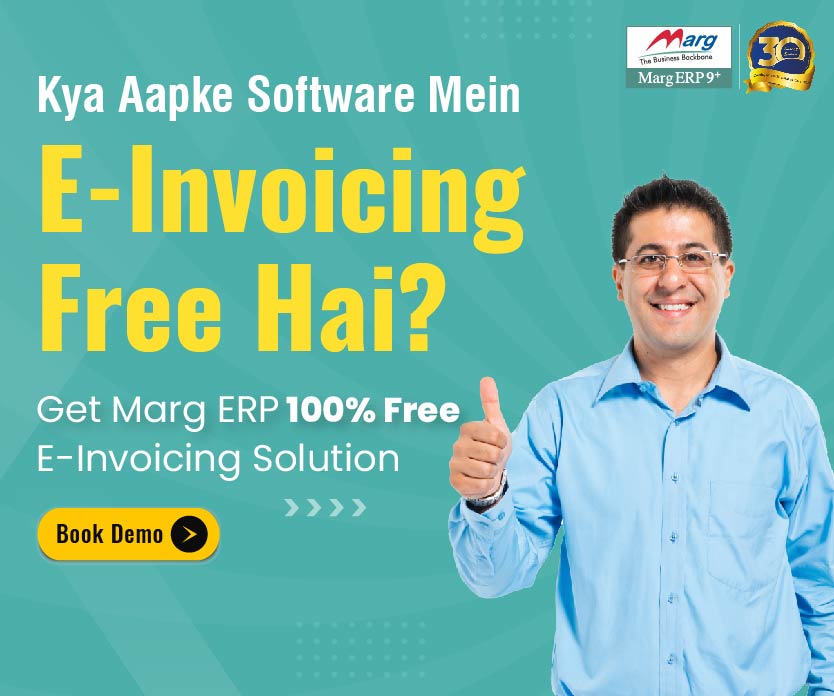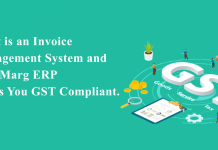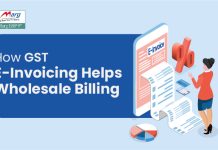Table of Contents
ToggleOverview of Electronic Invoicing
GST e-invoicing was introduced by the GSTN to authenticate and systematize the B2B invoices electronically for further use on the GST portal. It was introduced to ease the B2B reporting for the businesses whose yearly turnover is more than Rs. 100 Crore. Although on 1st October 2020, the central government of India has updated the GST e-invoicing scheme. Now, businesses with Rs.500 Crore and above are only supposed to generate invoices at the portal starting from 1st October 2020.
This new e-invoicing feature has standardized the B2B e-invoicing system. The new and improved format of uploading and creating invoices is mechanically readable and easy to process. Now you can easily download and import these files to the GST portal and e-way bill portal in real-time. This system has now easily enabled uniform interpretation and interoperability all across the GST portal.
For further ease, a unique Invoice Reference Number (IRN) is assigned to all the e-invoices and can be validated by the Invoice Registration Portal (IRP). Once they have authenticated the invoices, IRP will assign a separate QR code and sign the e-invoices and send them back to the supplier. From there this data will also send to the buyer through e-way bills on their registered email address. This information is accessible to all other parties as well for further use such as the Income Tax department to keep an eye on the transactions in real-time.
The main objective of the e-invoicing software feature is to maintain stability, uniformity, and reducing tax fraud. Earlier it was kind of impossible for tax officers to keep a record of every transaction made by the companies with high turnover and was not easy to manage and store data. GST e-invoicing software allows you to store the data and compartmentalize it in real-time even if the seller hasn’t uploaded them. You can upload the file in Excel and JSON format and it will store that data for the entire financial year.
Tax officers can access this data online as well as offline with the help of an application. In this article we are going to discuss all the features of e-invoicing software in detail and why are they necessary for smooth functioning and reporting.
Top Features Of Electronic Invoicing Software
There are mainly 3 important features of Electronic Invoicing software:
- Invoicing Reference Number(IRN)
- digital signature(DSC)
- Quick Response code (QR code)
Let’s start knowing them and their importance.
Invoicing Reference Number (IRN) Under Electronic Invoicing
Invoice Registration Portal (IRP) first validates and then assigns the unique Invoice Reference Number (IRN) to every invoice submitted by the supplier in the particular financial year. It is only to make sure that the seller is not uploading the same invoice again in an accounting year. IRP generates this computerize unique identification number with the help of the hash algorithm.
How Hash Algorithm Works For GSTN Portal
An algorithm is a process where certain parameters were set under specific instructions to obtain the desired result randomly. Hash algorithm changes the uploaded or saved data and converts it into a string of random alphanumeric numbers to encrypt the original message. GSTN portal uses the hash to avoid any manual interruption and to keep the system uncorrupted.
The hash algorithm also works on certain parameters and they define and create the IRN for each invoice.
These parameters are following:
- Type of the document such as invoice, credit note, and debit note.
- Number of the document
- GSTIN of the supplier
- Financial year for which invoice is created
Whenever a supplier uploads a document, the Hash algorithm starts working according to these parameters to verify the authenticity of this document and send this encrypted code to the central registry to validate its originality. Once the document is verified IRP will generate a computed value which is known as the IRN number for that particular document.
Digital Signature (DSC) Under Electronic Invoicing
To get authorization on a document from a government official or authority you need their signature. Just like that, you need a digital signature after the validation of the document to confirm its authenticity. Not everyone has the authority to create a digital signature, certain guidelines must be followed as mentioned in the Income Tax Act, 2000.
Digitalization has made the process easier and faster. Earlier government officials personally have to check and signed every document including credit and debit notes. You can also attach the digital signature if the required provisions are met as stated in the Income Tax Act, 2000.
Not every file on the GST electronic invoicing software has a digital signature. DSC is an optional parameter, unlike IRN and QR codes. It is only applicable to the JSON file format. A seller can also use these documents further as proof of the business transaction. The supplier needs to download and print the document as well as share the digital signature and QR code with the recipient.
To attach the DSC with your document your file must be in a JSON format and you need an electronic -invoicing software that can read a DSC. You also need an “emsigner” tool from the GST portal to run in your system. Once you upload the JSON file from your accounting system in a standardized format. Then click on the “ Verify using DSC” option and select your signature style and click “sign”
Quick Response Code (QR code) For Electronic Invoicing
A QR code is a type of matrix code or a two-dimensional barcode that has mechanical readability. A QR code can be scanned or used by any mobile device to access the related document or data. QR codes are also created under certain parameters and inputs.
These parameters are as following:
- GSTIN of the supplier
- GSTIN of the Recipient
- Invoice number is given by the supplier
- Date of the invoice created
- Value of the e-invoice
- Number of the items in the invoice
- HSN code of the main item
- Unique hash value or Invoice Reference Number
QR codes are used by the tax officers even in the absence of the internet as they can be used from any android system or alternative application to access the B2B document for preparing and verifying the Income-Tax. GST portal demands all businesses to provide and create QR codes as per the e-invoice scheme.
CONCLUSION
All the businesses with a turnover of more than Rs.500 Crore are required to generate GST e-invoicing from their accounting software and upload it on the GST portal to get the validation. Standardization, mechanical readability, uniformity, and elimination of duplication are the best features of e-invoicing software.
Marg GST e-invoicing software has made it all possible without any hassle. Now you can easily create. Upload document in JSON format and get validation by asserting IRN, DSC, and QR code to avoid any errors and smoothly process the B2B transaction. E-invoicing has enabled a significant reduction in tax evasion and fraud as the department of income tax has the access to all the documents in real-time.






